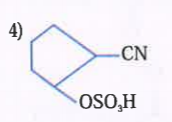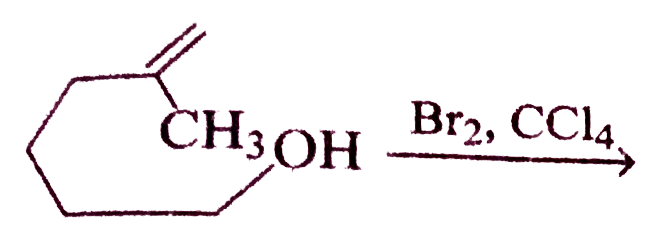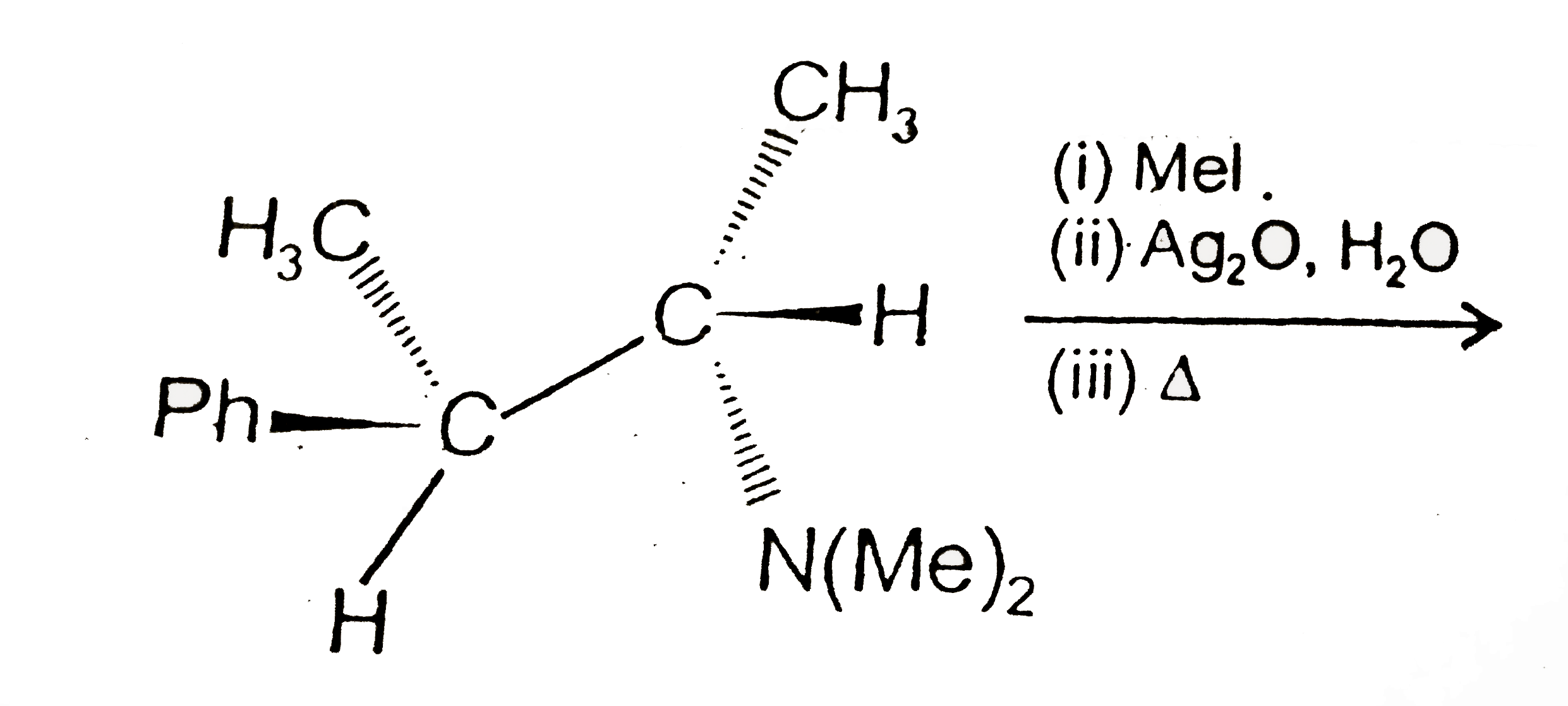The major product obtained in the reaction of Butadiene with ( mole) at a higher temperature ( or above ) is
dichlorobutene
chlorobutene
chlorobutene
chlorobutene
The correct Answer is:C
To determine the major product obtained from the reaction of 1,3-butadiene with HCl at a higher temperature (100°C or above), we can follow these steps:
1. Identify the Structure of 1,3-Butadiene:
- 1,3-butadiene has the formula C4H6 and consists of four carbon atoms with two double bonds. The structure can be represented as:
H2C=CH−CH=CH2
2. Understand the Reaction Conditions:
- The reaction involves the addition of HCl to 1,3-butadiene. Since the reaction is taking place at a higher temperature, we expect to follow the Markovnikov's rule and the formation of a more stable product.
3. Reaction Mechanism:
- The reaction of HCl with 1,3-butadiene will proceed through an electrophilic addition mechanism. The double bonds in the conjugated alkene can react with HCl, leading to the formation of a carbocation intermediate.
4. Formation of Carbocation:
- When HCl adds to 1,3-butadiene, the hydrogen (H+) will add to one of the terminal carbons, leading to the formation of a more stable secondary carbocation at the second carbon:
H2C=CH−CH=CH2+HCl→H3C−CH(Cl)−CH=CH2
5. Final Product:
- The chlorine (Cl-) will then attach to the carbon that has fewer hydrogen atoms, following the Markovnikov's rule. This results in the formation of 3-chloro-1-butene:
CH2=CH−CH(Cl)−CH3
6. Naming the Product:
- The product can be named according to IUPAC nomenclature. The chlorine is on the third carbon, and there is a double bond between the first and second carbon. Therefore, the name of the compound is 3-chloro-1-butene.
Conclusion:
The major product obtained from the reaction of 1,3-butadiene with HCl at a higher temperature is 3-chloro-1-butene.
- 1,3-butadiene has the formula C4H6 and consists of four carbon atoms with two double bonds. The structure can be represented as:
H2C=CH−CH=CH2
- The reaction involves the addition of HCl to 1,3-butadiene. Since the reaction is taking place at a higher temperature, we expect to follow the Markovnikov's rule and the formation of a more stable product.
- The reaction of HCl with 1,3-butadiene will proceed through an electrophilic addition mechanism. The double bonds in the conjugated alkene can react with HCl, leading to the formation of a carbocation intermediate.
- When HCl adds to 1,3-butadiene, the hydrogen (H+) will add to one of the terminal carbons, leading to the formation of a more stable secondary carbocation at the second carbon:
H2C=CH−CH=CH2+HCl→H3C−CH(Cl)−CH=CH2
- The chlorine (Cl-) will then attach to the carbon that has fewer hydrogen atoms, following the Markovnikov's rule. This results in the formation of 3-chloro-1-butene:
CH2=CH−CH(Cl)−CH3
- The product can be named according to IUPAC nomenclature. The chlorine is on the third carbon, and there is a double bond between the first and second carbon. Therefore, the name of the compound is 3-chloro-1-butene.
The major product obtained from the reaction of 1,3-butadiene with HCl at a higher temperature is 3-chloro-1-butene.
Topper's Solved these Questions
- ALKENE, ALKANE & ALKYNE BOOK - ALLENCHAPTER - ALKENE, ALKANE & ALKYNE EXERCISE - EXERCISE-3
99 Videos
- ALKENE, ALKANE & ALKYNE BOOK - ALLENCHAPTER - ALKENE, ALKANE & ALKYNE EXERCISE - EXERCISE-4(A)
10 Videos
- ALKENE, ALKANE & ALKYNE BOOK - ALLENCHAPTER - ALKENE, ALKANE & ALKYNE EXERCISE - EXCERSISE-3
28 Videos
- AIIMS 2019BOOK - ALLENCHAPTER - AIIMS 2019EXERCISE - CHEMISTRY
35 Videos
- ALKYL AND ARYL HALIDEBOOK - ALLENCHAPTER - ALKYL AND ARYL HALIDEEXERCISE - EXERCISE-05 (B)
37 Videos
Similar Questions
Knowledge Check
The major product obtainned in the reaction
 A
A B
B C
C D
D
 Major product obtained in the reaction is :A
Major product obtained in the reaction is :A B
B C
C D
D

The major product obtained in this reaction is:A B
B C
C D
D
The major product obtained in the given reaction is:

View SolutionThe major product obtained in the given reaction is :

View Solution
The major product obtained in this reaction is:
View Solution
Major product obtained in this reaction is:
View Solution
Major product obtained in this reaction is:
View Solution


